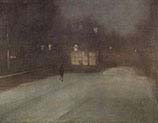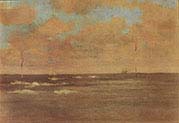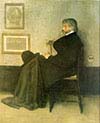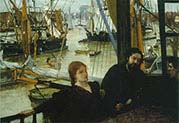James McNeill Whistler
1834-1903 America-England/Impressionism
Click an Image to Enlarge
Artist's Studio

Theodore Duret

Arrangement

Lady Meux

La Princesse

Self-portrait

Whistler's Mother

Whistler with Hat

White Girl

Chelsea Snow

The Lange Leizen

The Bathing Posts

Falling Rocket

Battersea Bridge

Little Juniper Bud

The Balcony

The Lagoon

Thomas Carlyle

The Piano

The Andalusian

Westminster Bridge

Wapping
